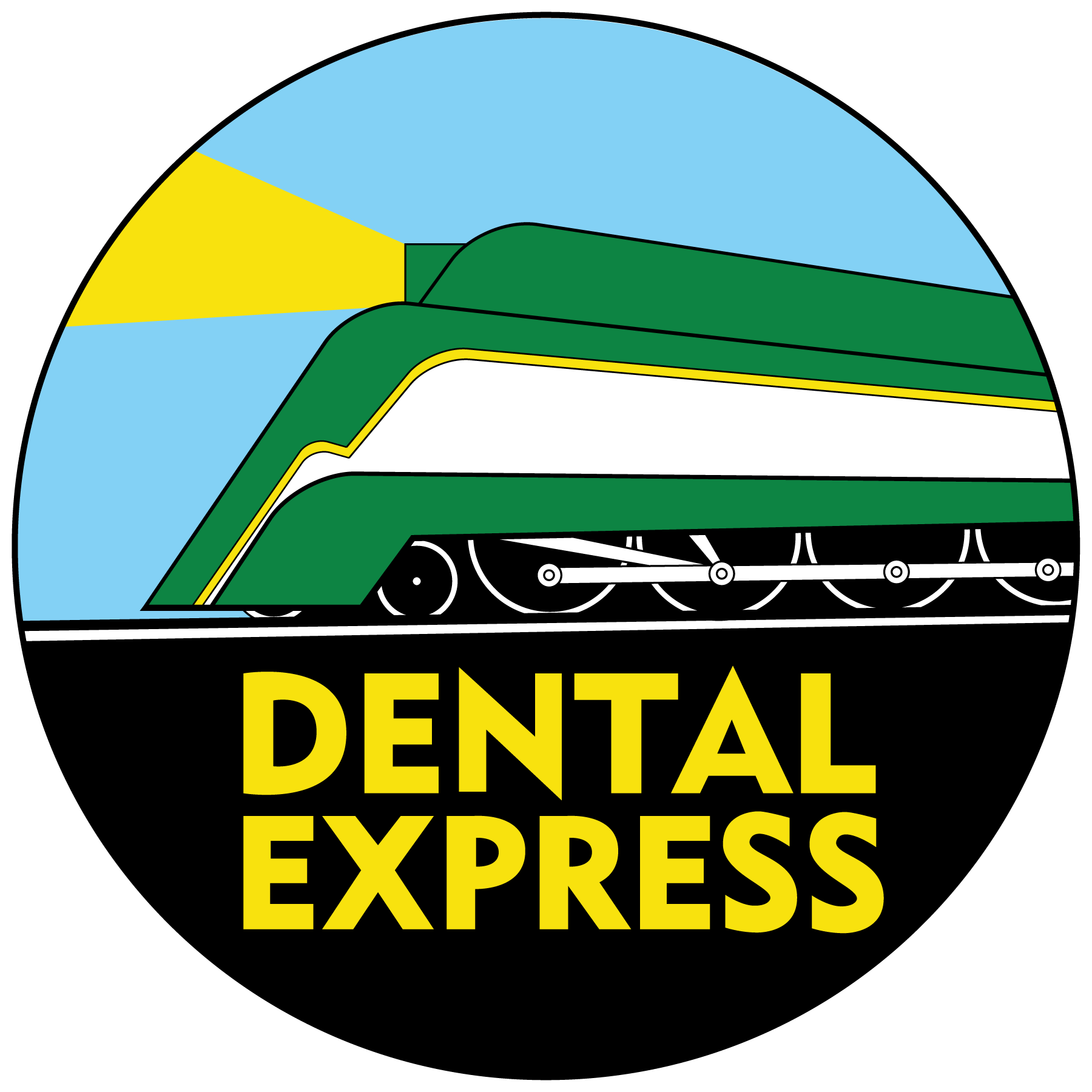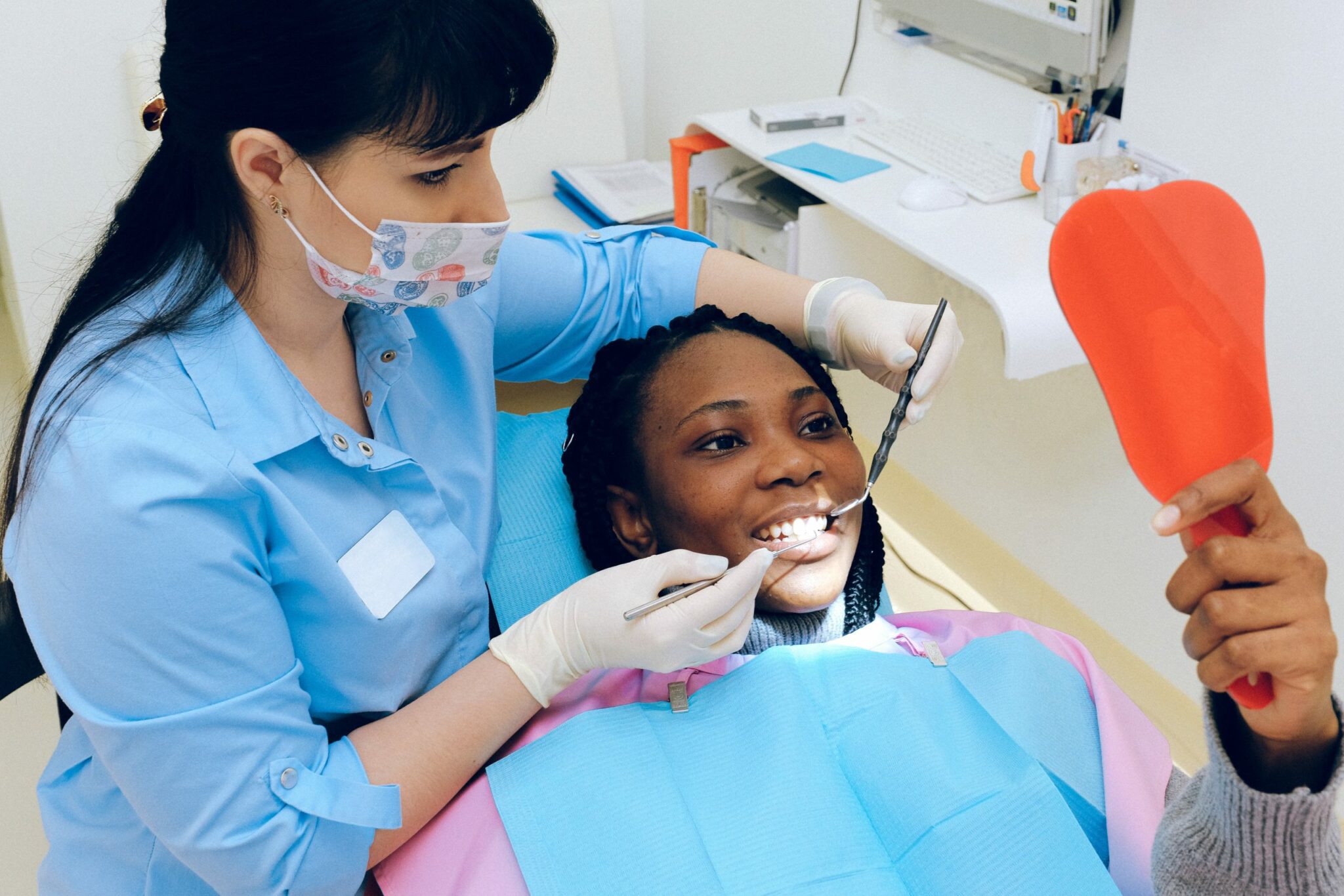With oral cancer, early detection is key. Learn everything you need to know about this condition and how to keep your smile safe
As humans, we’re naturally stubborn.
It’s in our nature to think, “That’ll never happen to me.”
But when it comes to oral and oropharyngeal cancer–cancer of the mouth and upper throat–it’s better to be safe than sorry.
Many people believe that if they avoid tobacco and drink in moderation, they’re safe from these conditions, but sadly, this isn’t the case.
Even if you’re diligent about your dental health, you could still be at risk.
This April marks the 22nd annual Oral Cancer Awareness Month. So, we wanted to cover the early signs and symptoms to give you the knowledge you need to build a solid preventive foundation.
And be sure to stay tuned. Later on in this blog, we’ll share a resource showing you how to perform an oral cancer self-exam at home.
Oral Cancer Isn’t a Bite-Sized Issue
According to the Oral Cancer Foundation (OCF), someone dies of oral or oropharyngeal cancer every hour. Twenty-four hours a day, seven days a week.
“This year, an estimated 54,0001 new cases of oral cancer will be diagnosed. Of those individuals, 43 percent will not survive longer than five years, and many who do survive to suffer long-term problems, such as severe facial disfigurement or difficulties with eating and speaking. The death rate associated with oral and oropharyngeal cancers remains particularly high because the cancers routinely are discovered late in their development.”
And it doesn’t help that these cancers fall under the category of squamous cell carcinoma, which are known for how aggressive they can be.
Oral Cancer Risk Factors
If you know the risk factors, you can minimize your chances of developing oral cancer and ensure your smile stays healthy.
Here’s a list of traits and lifestyle factors that can increase your risk:
- Tobacco Use – If you’re looking for the fastest way to develop oral and oropharyngeal cancer, then look no further. Smoking, chewing, dipping, and snuffing tobacco all significantly increase your risk and leave your mouth vulnerable not just to cancer, but tooth decay and gum disease as well.
- Heavy Alcohol Use – If you regularly consume large amounts of alcohol, you’re putting yourself at higher risk of oral cancer. Over time, frequent contact with alcohol damages the tissues in your mouth and throat. And as you can imagine, heavy alcohol use combined with tobacco is a recipe for high oral cancer risk.
- Men – Sorry guys, but men are typically more likely to develop oral and oropharyngeal cancer than women. If this applies to you, it couldn’t hurt to be a little more attentive about your dental health.
- People Over 45 Years Old – Oral and oropharyngeal cancer can occur at any age, but those over 45 years of age are more likely to develop these conditions.
- Poor Dental Care Habits – Neglecting your dental health can lead to serious complications in the long run. Those who don’t brush and floss consistently are at greater risk. So stay on top of your dental care routine at home and set regular checkups with your San Diego dentist.
- Poor Nutrition – What you put in your mouth can be just as important as how you take care of it. People with diets low in fruits and vegetables and specifically a lack of vitamin A can be at a greater risk of oral cancer.
- Human Papillomavirus (HPV) – This sexually transmitted disease has been linked to an increased risk of oropharyngeal cancer.
If you use tobacco, the sooner you quit, the better. That’s much easier said than done, but remember, it’s not just your dental health that’s at stake. It’s your life.
Quitting strategies like weaning off of tobacco, nicotine patches, and nicotine gum can be a great help if cold turkey is too difficult.
When it comes to alcohol, the Centers for Disease Control state that for men, heavy drinking is consuming 15 or more drinks per week. For women, eight or more drinks per week is considered excessive.
If you hit these numbers, try to be more mindful of your alcohol consumption and drink in moderation.
As we’ve learned, the older we get, the higher our risk becomes. So the quicker we make these changes, the safe we’ll be.
Oral Cancer Signs & Symptoms
Since these cancers spread quickly, early detection is crucial. Screenings at your local San Diego are the best way to detect oral cancer early and take the necessary steps to protect your health.
But there are signs and symptoms to look out for in between dentist visits that can alert you when there’s a problem.
This list from the OCF outlines the red flags to watch out for:
- Any sore or ulceration that doesn’t heal within fourteen days.
- A red, white, or black discoloration of the soft tissues in your mouth.
- Any abnormality that bleeds easily when touched.
- A lump or hard spot in your oral tissue, usually on the border of the tongue.
- A growth or raised portion of tissue.
- A sore underneath a denture which, even after adjustment, doesn’t heal.
- A lump or thickening that develops in your mouth.
- A painless, firm, fixated lump felt on the outside of your neck, which doesn’t go away for at least two weeks.
- Specifically for HPV-related oropharyngeal cancer, symptoms can include swelling or a painless lump in the neck, sore throat, difficulty or pain when swallowing, and swelling of the tonsils at the back of the mouth.
All these symptoms have something in common: they all have a knack for overstaying their welcome and not going away.
As soon as you notice any of these signs or symptoms, schedule a checkup with your San Diego dentist immediately. If you can walk in or make a same-day appointment, make it happen.
We can’t stress the importance of early detection enough. Being seen as soon as possible can mean the difference between life and becoming one of the stats we saw above.
How to Perform an Oral Cancer Self-Exam
To check for oral cancer at home, you’ll need three things:
- A mirror (preferably handheld).
- A source of light.
- And a small piece of gauze to hold your tongue.
If you don’t have a handheld mirror, you can try using your bathroom mirror or another mirror in your house. Whichever one you choose, you’ll need to get close enough to it to have a good look at the inside of your mouth.
If you want to get fancy, the OCF offers a “Check Your Mouth Kit” that includes a small handheld mirror and a two-in-one throat scope light and tongue depressor for just $20.
You can find an instructional video and in-depth description of how to perform your own oral cancer self-screening on the OCF website.
If you think you’re at high risk or just want to be on the safe side, you can do a self-exam between your annual dental checkups.
There’s certainly no harm in doing an extra self-screening or two.
There’s No Better Time for a Screening
Oral Cancer Awareness Month is the perfect time to schedule an oral cancer exam.
At Dental Express, we offer screenings at all six of our San Diego locations. And if you notice any symptoms at home, we always accept walk-ins and same-day appointments.
Using a special light that illuminates cancerous tissue, we’ll look inside your mouth and make sure you’re clear of any lumps, spots, or swelling.
If we find evidence of oral or oropharyngeal cancer, we’ll create a plan to tackle the problem as soon as possible and do everything in our power to protect your health.
If you have any questions about oral cancer or you’d like to schedule an appointment, give us a call. We’re here to help you put your best smile forward.
Keep Reading
7 Times You’ll Need Emergency Dental Care
How Does Genetics Affect Your Dental Health?

